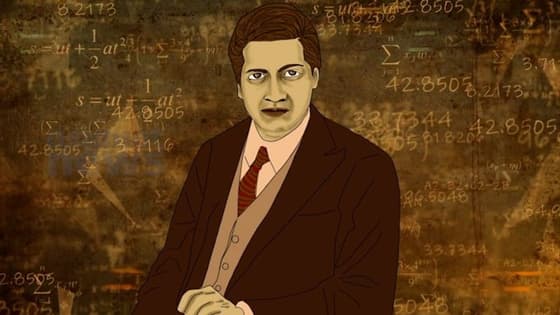
India@75: How Srinivasa Ramanujan became world's greatest mathematician
Srinivasa Ramanujan was the most brilliant modern link to this great Indian mathematical tradition.
Ancient India's contribution to mathematics was astounding. It was the land of the Aryabhatas, Bhaskaras and Sangamagrama Madhavan. It discovered the decimals and the zero.

Srinivasa Ramanujan was the most brilliant modern link to this great Indian mathematical tradition. A life cut short by poverty and ill health, Ramanujan became one of the world's greatest mathematicians before he died at 32.
Also watch: India@75: Life of Hasrat Mohani, the freedom fighter who coined Inquilab Zindabad
Even without formal training in mathematics, Ramanujan worked wonders in the science of numbers and pure mathematics.
Ramanujan was born in 1887 at Erode, then in the Mysore kingdom, to a poor Tamil Brahmin family. His father, Kuppuswamy Srinivasa Iyengar, was a textile shop clerk in Kumbakonam in the Tanjavur district of Tamil Nadu. His mother, Komalathammal, was an occasional temple singer.
Ramanujan's mathematical skills became famous even while in school at Kumbakonam. By 16, the child prodigy knew by heart all the 5000 theorems in the classic on pure maths penned by G.S. Carr.
But everything turned upside down when Ramanujan reached college. He could not concentrate on any other topic other than mathematics. He failed in all except mathematics. It became impossible.
For Ramanujan to acquire a degree and he was highly depressed. By then, he also got married to Janaki, and a job became essential to ward off starvation. Finally, he got a job as a clerk in the Madras Port Trust with a monthly salary of Rs 20. But every minute he was not attending the office, Ramanujan kept writing up mathematical equations and theorems he arrived at mainly through intuition and induction.
Also watch: India@75: Mahatma Jyotiba Phule, the Father of Indian social revolution
Ramanujan's big break came when his brilliant paper on Bernoulli numbers was published in the Indian mathematical Society Journal. His genius became known in Madras's mathematical circles. Helped by some professors, he kept sending his papers to scholars abroad.
Finally, G H Hardy, the famed professor at Trinity College, Cambridge, was highly impressed with his work and was stunned by the natural mathematical skills of the young man who was not even a graduate. Thus began a great friendship and academic collaboration.
Persuaded by Hardy to break his Brahmin bar on crossing the sea, Ramanujan set sail to London on March 17, 1914. It was one roller coaster academic ride for him with Hardy and his colleague John Littlewood at Trinity. The other two provided the ballast of proof for Ramanujan's unproven yet path-breaking insights.
Many published papers later Ramanujan became at 31 one of the youngest and the second Indian to be a Fellow of the exalted Royal Society in 1918.
Soon he also became the first Indian to be elected the Fellow of Trinity College. He was compared to Mathematical greats like Euler and Jacobi.
Also watch: India@75: Perungamanallur, Jallianwala Bagh of the South
But by that time, he was felled by a chronic disease he was suffering from, which was then diagnosed as tuberculosis. Ramanujan was forced to return to India and died a year later. The nation celebrates his birthday on December 22 as National Mathematics day.